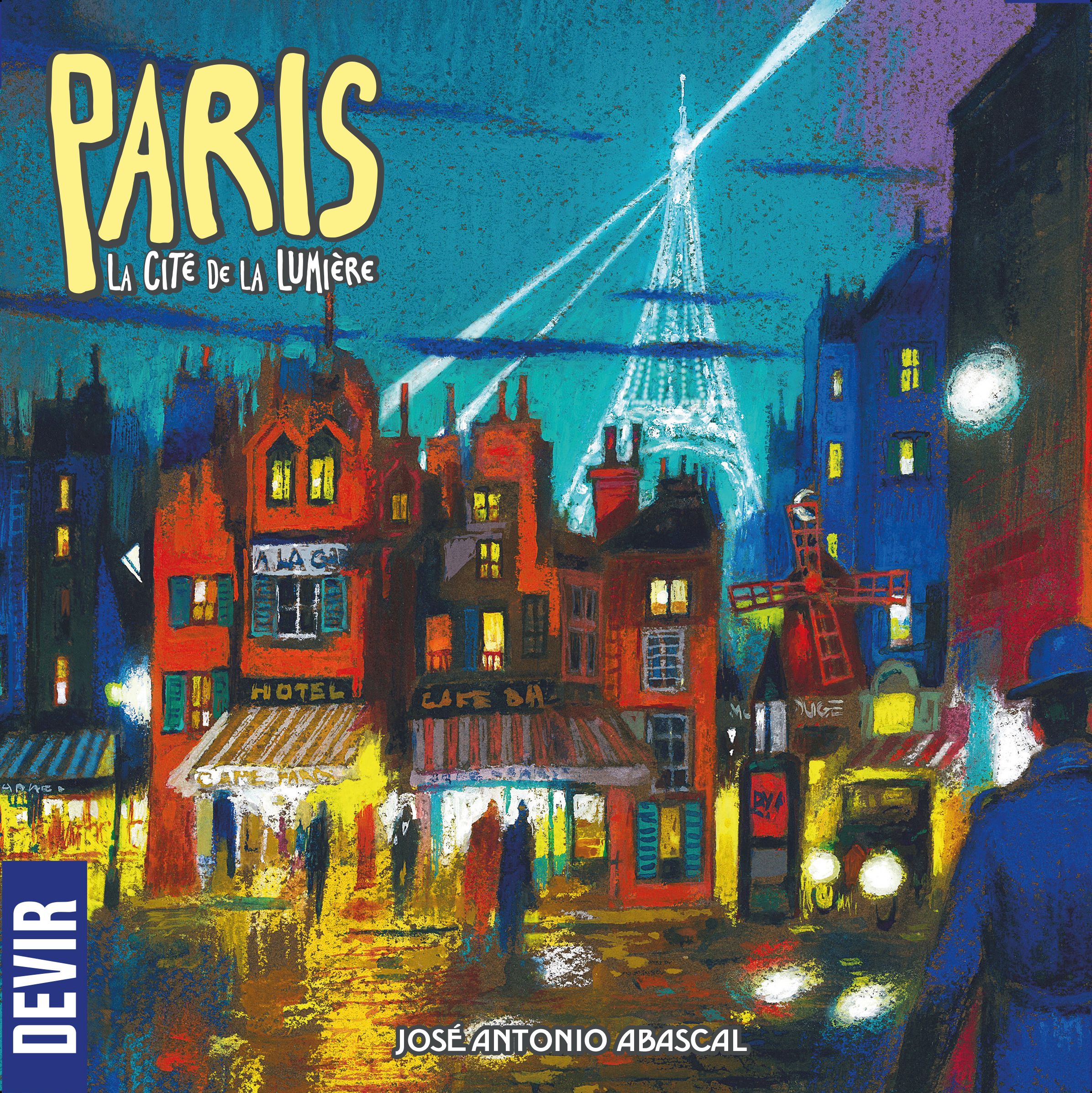
Paris: La Cité de la Lumière (2019)
2 - 2 persone
30 - 30 min
8+
Al momento questo prodotto non è disponibile presso nessun venditore.
Nomi alternativi: Parijs: De Lichtstad, Paris: Die Stadt der Lichter, Paris: La Cité de la Lumière, Paris: Orașul Luminilor, Paris: Ville Lumière, Paříž: Město světel, Párizs: A fények városa társasjáték, Paryż: Miasto Świateł, Париж: Город Огней, Париж. Місто вогнів, パリ -光の都-, 빛의 도시, 파리
Editori: Devir, 999 Games, GaGa Games, Ideal Board Games, IELLO, KOSMOS, Lacerta, Mandoo Games, Reflexshop, REXhry, u0406u0433u0440u043eu043cu0430u0433, u30c6u30f3u30c7u30a4u30bau30b2u30fcu30e0u30ba(TendaysGames)
Riconoscimenti: 2019 5 Seasons Best Portuguese Strategy Game Nominee, 2021 Gra Roku Best Two Player Game Nominee, 2022 MinD-Spielepreis 2 Players Game Nominee
Descrizione: Paris is a two-player board game by José Antonio Abascal infused with Parisian aesthetics by the boardgame’s artist Oriol Hernández. The game is set in late 19th century Paris during the 1889 “Exposition Universelle,” or world’s fair, when public electricity was a hot topic. Electricity spread throughout the city, creating today’s beautiful nocturnal Parisian streets and coining Paris’s nickname “La Cité de la Lumiére”, the city of lights.
The most well-lit buildings are admired more highly by passers-by. In the first phase, players can either place tiles or grow their reserve of buildings. The cobblestone tiles are divided into 4 random spaces (their color, their opponents’ color, a streetlight or a mixed-color space where either player can build).
Then, in the second phase, players build on top of their color or the mixed spaces, in effort to position their buildings as close to as many streetlights as possible. More streetlights solicit more adoration and points. The player with the best lit buildings steals the hearts of Parisian pedestrians and wins the game.
—description from the publisher
The most well-lit buildings are admired more highly by passers-by. In the first phase, players can either place tiles or grow their reserve of buildings. The cobblestone tiles are divided into 4 random spaces (their color, their opponents’ color, a streetlight or a mixed-color space where either player can build).
Then, in the second phase, players build on top of their color or the mixed spaces, in effort to position their buildings as close to as many streetlights as possible. More streetlights solicit more adoration and points. The player with the best lit buildings steals the hearts of Parisian pedestrians and wins the game.
—description from the publisher
